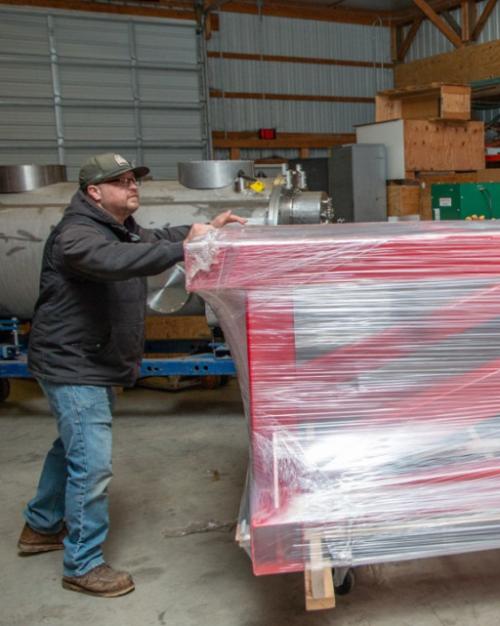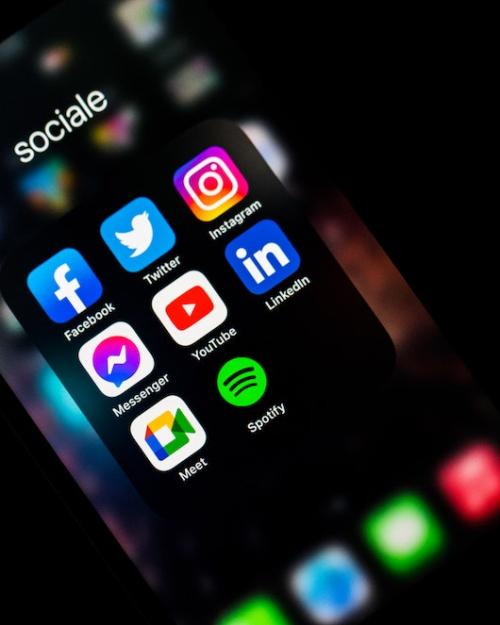Journalistic fact checks are a more effective counter to COVID-19 misinformation than the false news tags commonly used by social media outlets, according to new Cornell research.
“We find that more information may be an antidote to misinformation,” conclude political scientists Sarah Kreps and Douglas Kriner.
Kreps and Kriner are co-authors of “The COVID-I9 Infodemic and the Efficacy of Interventions Intended to Reduce Misinformation,” published Feb. 16 in Public Opinion Quarterly. Kreps is the John L. Wetherill Professor and interim chair of government and director of the Cornell Tech Policy Lab in the College of Arts and Sciences, and Kriner is the Clinton Rossiter Professor in American Institutions in the Department of Government (A&S) and faculty director of the Institute of Politics and Global Affairs; both are faculty in the Cornell Jeb E. Brooks School of Public Policy.
The researchers say the pandemic has given rise to a proliferation of misinformation that threatens public health by drowning out factual content and prompting individuals to take measures that are ineffective at best and harmful at worst.
Media outlets have countered the flow of bogus claims with two tools:
- False tags are labels used by Facebook and other social media companies. They often partially obscure a post by saying it is “false information, checked by independent fact-checkers.” Scrollers do not have easy access to the details of that check.
- Journalistic fact checks both flag a post as false and provide information rebutting the false claim with links to additional information.
These fact checks have been commonly used to weigh the accuracy of statements made by political candidates. The research by Kreps and Kriner is among the first to test them in the context of COVID-19.
Kriner and Kreps based their findings on a pair of online, demographically representative surveys of 2,000 Americans that included embedded experiments. They tested examples of fact checks and false tags on false claims that would resonate with an array of viewpoints on the pandemic.
One example was an incorrect claim by former President Donald Trump that the U.S. had tested more for COVID-19 than every country combined. Simply tagging the claim as false had no effect on survey participants’ perception of its accuracy and actually increased their likelihood of sharing it on social media. By contrast, respondents who saw the journalistic factcheck were much less likely to believe the fake claim.
Another example was an incorrect claim by former gubernatorial candidate Stacey Abrams that Georgia’s COVID-19 case rate skyrocketed by 40% in the weeks immediately following its reopening. Simply tagging the claim as false had no effect on survey participants’ perception of its accuracy or likelihood of sharing it on social media.
By contrast, respondents who saw the journalistic fact check explaining why the claim was false were significantly less likely to believe it and share it on social media. This was true even for Democrats who might have been predisposed to believe the false claim about the negative consequences of a fast reopening in Georgia.
Sharing habits and actions offers a useful window into how people process information and misinformation, the researchers said. Previous research has shown that sharing is an important indicator because it can extend the reach of news, and a self-reported willingness to share offers genuine insight into what people will do on social media.
While past research has found that false tags can effectively combat political misinformation, they proved ineffective in countering misinformation about COVID-19. But there is still a barrier to bogus claims. “Our results suggest that while false tags are ineffective, journalistic fact checks may help combat misinformation,” Kriner and Kreps concluded. “When they are deployed, journalistic fact checks appear promising, providing factual information as an antiseptic to online misinformation.”
Jim Hanchett is assistant dean of communications for the Cornell Jeb E. Brooks School of Public Policy.




